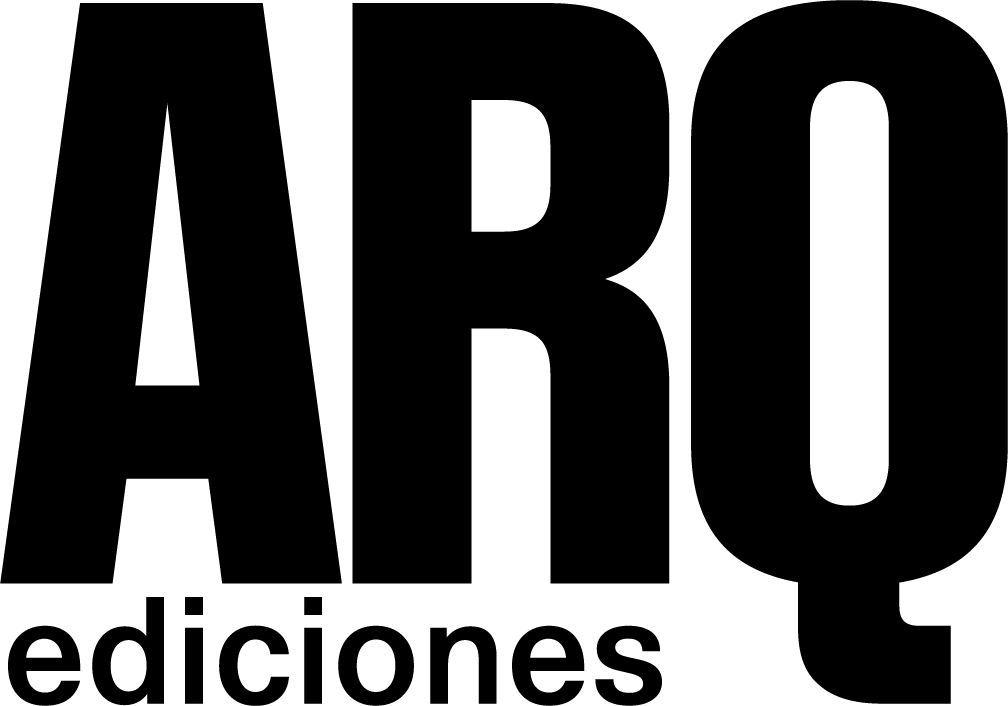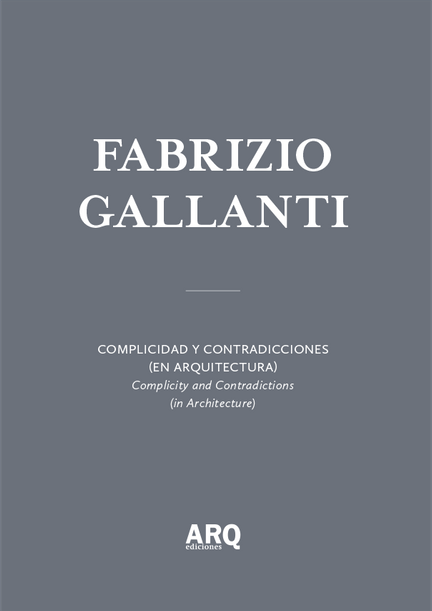Fabrizio Gallanti; Francisco Díaz, Rayna Razmilic (eds.)
Paperback; exposed binding with dust jacket
12 x 17 cm | 94 pp.
Spanish + English
ISBN: 978-956-9571-99-2
How conscious are we, as architects, of the political roles we play? Fabrizio Gallanti—architect, curator, and writer, Ph.D. Politecnico di Torino—discusses the political dimension of our discipline. First, in “Complicity and Contradiction (in architecture),” the statement that “architecture kills” serves as a starting point to examine the architect’s complicit role in the processes of the current capitalist system, aiming to propose modes of action that derive from an awareness of politically conscious positions. The second essay, “Political Concrete,” speculates on the use of concrete in Brazil and its links with the ideas of the Workers’ Party and the socialist ideals of Brazilian modern architects. Together, they form a reflection that highlights the political role of architecture, in its various stages and modes of production—and destruction.
“Not only the final outcomes of the actions of architectural design and engineering—that is, buildings and infrastructures—can generate dangers for those who inhabit and use them when not properly executed and maintained, but the act itself of construction has been since time immemorable a site of inequity and dangerous working conditions for workers who operate within it. Only in recent years architecture historians have started to consider the issue of the labor inscribed in the execution of building as a field of inquiry, not only to understand questions of form and usage, but also delineating possible lines of analysis, where economic and social relations of power are scrutinized.” [extract from side A: “Complicity and Contradictions”]
“Concrete in Brazil was political. It was a tool for direct political action, and a much-debated subject in cultural and political quarrels that crossed the body of artists, intellectuals, activists, designers, and politicians who operated in Brazil before and after the military coup of 1964.” [extract from side B: “Political Concrete”]
Side A: “Complicity and Contradictions (in Architecture)”
Side B: “Political Concrete”
Fabrizio Gallanti is an architect, curator, and writer. Since 2021, he has been the Director of Arc en rêve – Centre d’Architecture in Bordeaux. He holds a PhD from the Politecnico di Torino (2001) and an M.Arch from the University of Genoa (1995). He was a founding member of Gruppo A12, a collective working between art and architecture based in Genoa, Italy (1993–2004). He served as architecture editor for Abitare magazine (2007–2011) and as Director of Programs at the Canadian Centre for Architecture in Montreal (2011–2014). Gallanti was the inaugural Senior Mellon Fellow at Princeton University (2014). Since 2014, he has been a visiting professor at the Architectural Association in London, and has also taught in Canada, Chile, Italy, Hong Kong, the United Kingdom, and the United States.
Buy
Buy Internationally
Read on ARQ+
Paperback; exposed binding with dust jacket
12 x 17 cm | 94 pp.
Spanish + English
ISBN: 978-956-9571-99-2
How conscious are we, as architects, of the political roles we play? Fabrizio Gallanti—architect, curator, and writer, Ph.D. Politecnico di Torino—discusses the political dimension of our discipline. First, in “Complicity and Contradiction (in architecture),” the statement that “architecture kills” serves as a starting point to examine the architect’s complicit role in the processes of the current capitalist system, aiming to propose modes of action that derive from an awareness of politically conscious positions. The second essay, “Political Concrete,” speculates on the use of concrete in Brazil and its links with the ideas of the Workers’ Party and the socialist ideals of Brazilian modern architects. Together, they form a reflection that highlights the political role of architecture, in its various stages and modes of production—and destruction.
“Not only the final outcomes of the actions of architectural design and engineering—that is, buildings and infrastructures—can generate dangers for those who inhabit and use them when not properly executed and maintained, but the act itself of construction has been since time immemorable a site of inequity and dangerous working conditions for workers who operate within it. Only in recent years architecture historians have started to consider the issue of the labor inscribed in the execution of building as a field of inquiry, not only to understand questions of form and usage, but also delineating possible lines of analysis, where economic and social relations of power are scrutinized.” [extract from side A: “Complicity and Contradictions”]
“Concrete in Brazil was political. It was a tool for direct political action, and a much-debated subject in cultural and political quarrels that crossed the body of artists, intellectuals, activists, designers, and politicians who operated in Brazil before and after the military coup of 1964.” [extract from side B: “Political Concrete”]
Side A: “Complicity and Contradictions (in Architecture)”
Side B: “Political Concrete”
Fabrizio Gallanti is an architect, curator, and writer. Since 2021, he has been the Director of Arc en rêve – Centre d’Architecture in Bordeaux. He holds a PhD from the Politecnico di Torino (2001) and an M.Arch from the University of Genoa (1995). He was a founding member of Gruppo A12, a collective working between art and architecture based in Genoa, Italy (1993–2004). He served as architecture editor for Abitare magazine (2007–2011) and as Director of Programs at the Canadian Centre for Architecture in Montreal (2011–2014). Gallanti was the inaugural Senior Mellon Fellow at Princeton University (2014). Since 2014, he has been a visiting professor at the Architectural Association in London, and has also taught in Canada, Chile, Italy, Hong Kong, the United Kingdom, and the United States.


